Republic of Latvia
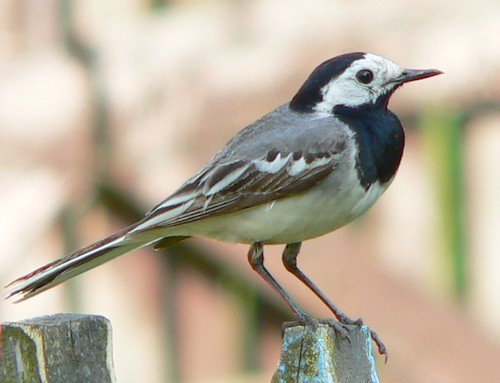
Latvia is a country in the Baltic region of Northern Europe. It is one of the three Baltic states, along with Estonia to the north and Lithuania to the south. It borders Russia to the east and Belarus to the southeast, and shares a maritime border with Sweden to the west. Latvia covers an area of 64,589 km2 (24,938 square miles), with a population of 1.9 million. The country has a temperate seasonal climate. Its capital and largest city is Riga where a third of Latvians live. Latvians, who are the titular nation and comprise 63.0% of the country’s population, belong to the ethnolinguistic group of the Balts and speak Latvian. Russians are the most prominent minority in the country, at almost a quarter of the population; 37.7% of the population speak Russian as their native tongue.
Most of Latvia’s territory is less than 100 m above sea level. Its largest lake, Lubāns, has an area of almost 81 km2 (over 31 square miles), its deepest lake, Drīdzis, is 214 feet deep. The longest river on Latvian territory is the Gauja, at 452 km (281 miles) in length. The second longest river is the Daugava, 352 km (219 miles) of which is on Latvian territory. Latvia’s highest point is Gaiziņkalns, (1,022 feet). The length of Latvia’s Baltic coastline is 494 km (307 miles). An inlet of the Baltic Sea, the shallow Gulf of Riga is situated in the northwest of the country.
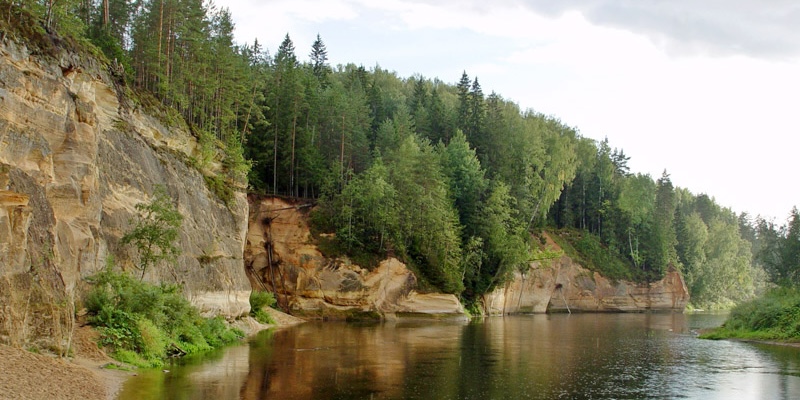
Ergelu Cliffs, Gauja River – ©Gatis Pāvils CC BY-SA 3.0 via Wikimedia Commons
Latvia has a temperate climate that has been described in various sources as either humid continental or oceanic/maritime. Coastal regions, especially the western coast of the Courland Peninsula, possess a more maritime climate with cooler summers and milder winters, while eastern parts exhibit a more continental climate with warmer summers and harsher winters. Nevertheless, the temperature variations are little as the territory of Latvia is relatively small. Moreover, Latvia’s terrain is particularly flat, thus the Latvian climate is not differentiated by altitude. There are four pronounced seasons of near-equal length. Winter starts in mid-December and lasts until mid-March. Winters have average temperatures of −6 °C and are characterized by stable snow cover, bright sunshine, and short days. Severe spells of winter weather with cold winds, extreme temperatures of around −30 °C and heavy snowfalls are common. Summer starts in June and lasts until August. Summers are usually warm and sunny, with cool evenings and nights. Summers have average temperatures of around 19 °C, with extremes of 35 °C. Spring and autumn bring fairly mild weather.
Most of the country is composed of fertile lowland plains and moderate hills. In a x, a mosaic of vast forests alternates with fields, farmsteads, and pastures. Arable land is spotted with birch groves and wooded clusters, which afford a habitat for numerous plants and animals. Latvia has hundreds of kilometres of undeveloped seashore, lined by pine forests, dunes, and continuous white sand beaches. Latvia has the fifth highest proportion of land covered by forests in the European Union, after Sweden, Finland, Estonia and Slovenia. Forests account for 3,497,000 hectares or 56% of the total land area.
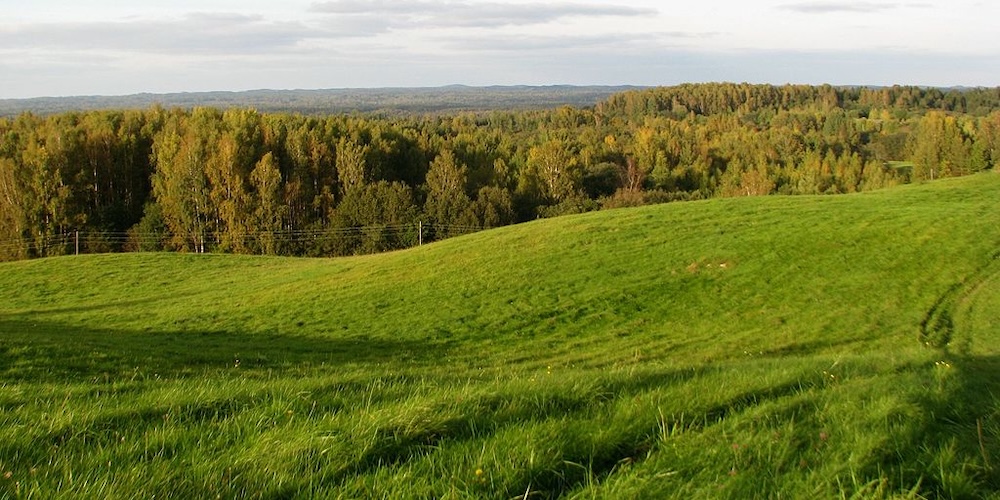
Drusku kalns – ©Evita wiki CC BY-SA 4.0 via Wikimedia Commons
Latvia has over 12,500 rivers; major rivers include the Daugava River, Lielupe, Gauja, Venta, and Salaca, the largest spawning ground for salmon in the eastern Baltic states. There are 2,256 lakes that are bigger than 1 ha, with a collective area of 1,000 km2. Mires occupy 9.9% of the territory. Of these, 42% are raised bogs; 49% are fens; and 9% are transitional mires. 70% percent of the mires are untouched by civilisation, and they are a refuge for many rare species of plants and animals. Agricultural areas account for 1,815,900 ha or 29% of the total land area.
There are 706 specially state-level protected natural areas in Latvia: four national parks, one biosphere reserve, 42 nature parks, nine areas of protected landscapes, 260 nature reserves, four strict nature reserves, 355 nature monuments, seven protected marine areas and 24 micro-reserves – around 20% of Latvia’s total land area. The national parks are Gauja National Park in Vidzeme, Ķemeri National Park in Zemgale, Slītere National Park in Kurzeme and Rāzna National Park in Latgale.
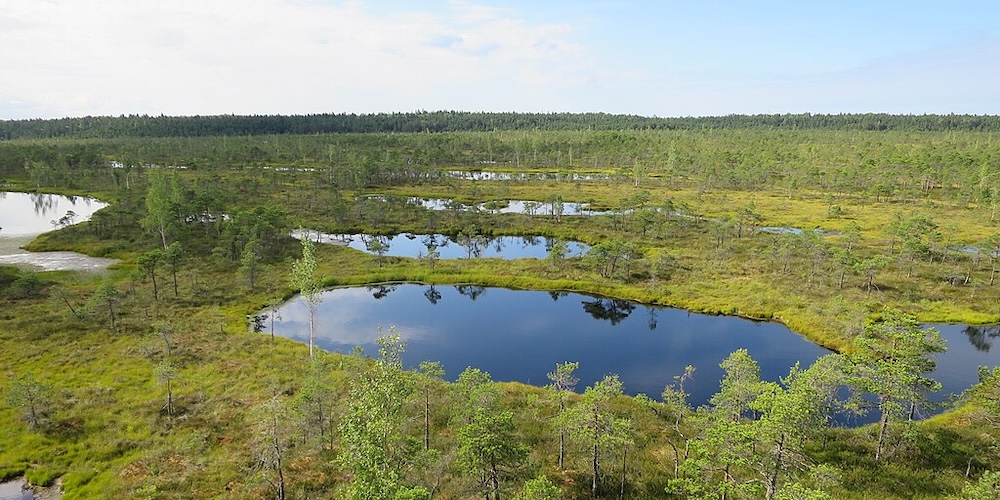
Ķemeri National Park – ©Edelmauswaldgeist, CC0, via Wikimedia Commons
Approximately 30,000 species of flora and fauna have been recorded in Latvia. Larger mammals include deer, wild boar, moose, lynx, bear, fox, beaver and wolves. Endangered bird species in other European countries that are common in Latvia include: Black Stork Ciconia nigra, Corncrake Crex crex, Lesser Spotted Eagle Aquila pomarina, White-backed Woodpecker Picoides leucotos, Eurasian Crane Grus grus. Phytogeographically, Latvia is shared between the Central European and Northern European provinces of the Circumboreal Region within the Boreal Kingdom. It belongs to the ecoregion of Sarmatic mixed forests. Several species of flora and fauna are considered national symbols. Oak Quercus robur, and linden Tilia cordata, are Latvia’s national trees and the daisy Leucanthemum vulgare, its national flower. The White Wagtail Motacilla alba is Latvia’s national bird. Several nature reserves protect unspoiled landscapes with a variety of large animals. At Pape Nature Reserve, where European bison, wild horses, and recreated aurochs have been reintroduced, there is now an almost complete Holocene megafauna also including moose, deer, and wolf.
Birding Latvia
With an outline like a nestling, Latvia is, largely, a flat country, with a rather monotonous agricultural landscape, but it also has wide forests and wetlands of various types. Being an East European country, albeit slightly to the north, it has an impressive range of species mixed up in a cocktail that is rather different from that of Western Europe. A few examples of the notable breeding species are Black Stork, Lesser-spotted Eagle, Ural Owl, Blyth’s Reed Warbler, Greenish Warbler, Red-breasted Flycatcher, Thrush Nightingale and Common Rosefinch; all these species are fairly common throughout the country. Some uncommon exotic species also breed, for instance, Little Bittern, Short-toed Eagle, Great Snipe, Marsh and Terek Sandpipers, Whiskered Tern, Pygmy and Tengmalm’s Owls, Citrine Wagtail and Parrot Crossbill.
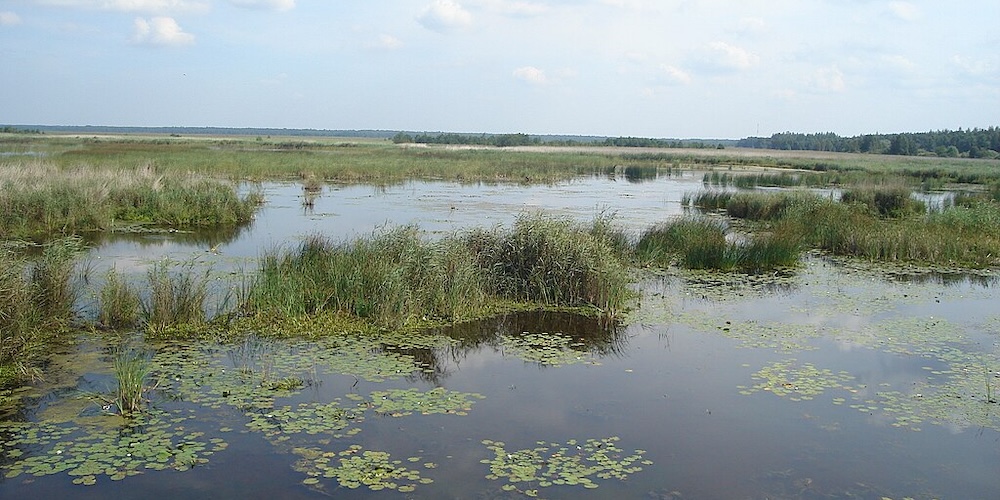
Pape Nature Reserve – ©mikroskops CC BY-SA 3.0 via Wikimedia Commons
It is not only the location that makes it different from other countries. Ineffective agriculture and forestry during Soviet rule favoured many bird species. By way of illustration, the Corncrake remains widespread with no less than 26,000 breeding pairs, the Common Crane is a rather common breeder in bogs and wet forest clearings, and a number of species of woodpeckers maintain good populations. The White-backed Woodpecker, for instance, is estimated to be 1,500 breeding pairs, but Middle-spotted is increasing and expanding its range. Red-backed Shrike is common – many can be seen perching on wires and bush tops along the roads. The number of White Stork is also imposing – imagine 10,500 pairs for a territory of only 65,000 km2. But don’t be fooled into false optimism by this portrait. Times are changing – forest felling intensifies and agriculture is increasingly following western models. Will the bird life remain unaffected? Definitely not, the only question is how seriously?
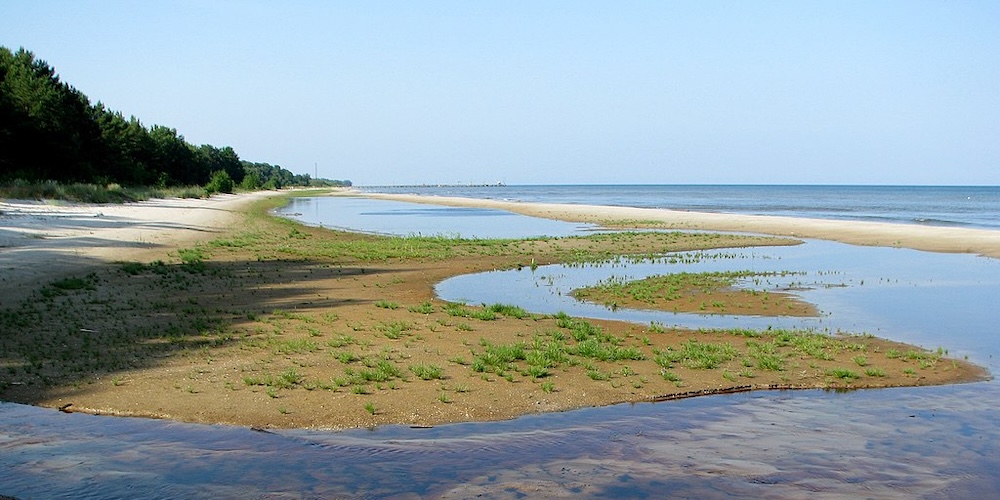
Baltic Sea Riga Gulf – ©Evita wiki CC BY-SA 4.0 via Wikimedia Commons
In Spring and Autumn many migrating birds pass over. Two bottle-necks in the western part of Latvia – Kolka and Pape, concentrate the largest numbers. Massive movement of divers and sea ducks take place along the west coast in spring. Grey geese passage happens twice a year, when many stop at our wetlands to rest. One of the most interesting wintering species is Stellers’s Eider. It is not common, but currently one wintering site is known on the west coast. To conclude, Latvia is, without a doubt an interesting country for birdwatchers, and there are still lots of things to discover.
The Latvian Ornithological Society currently has several hundred members. Birdwatching is not yet a popular outdoor activity in the country, and people with binoculars are rarities in themselves.
-
Number of bird species: 380
(As at April 2025)National Bird: White Wagtail Motacilla alba
-
Avibase
PDF ChecklistThis checklist includes all bird species found in Latvia , based on the best information available at this time. It is based on a wide variety of sources that I collated over many years. I am pleased to offer these checklists as a service to birdwatchers. If you find any error, please do not hesitate to report them. -
E-Bird
PDF ChecklistThis checklist is generated with data from eBird (ebird.org), a global database of bird sightings from birders like you. If you enjoy this checklist, please consider contributing your sightings to eBird. It is 100% free to take part, and your observations will help support birders, researchers, and conservationists worldwide. -
Wikipedia
Annotated ListThis is a list of the bird species recorded in Latvia. The avifauna of Latvia include a total of 382 species, of which 3 were introduced by humans.
-
Birds of Europe, North Africa, and the Middle East
| Photographic Guide | By Frédéric Jiguet & Aurélien Audevard | PUP | 2017 | Paperback | 447 pages, 2200 colour photos, colour distribution maps | ISBN: 9780691172439 Buy this book from NHBS.com -
Birds of Latvia
| (Latvijas putni / Ptitsy Latvii) | By Viesturs Klimpins | Avots | 1986 | Hardback | 184 pages, Colour photos | Trilingual in English, Russian, and Latvian | Out of Print | ISBN: 9785899600258 Buy this book from NHBS.com -
Collins Bird Guide
| By Lars Svensson | Harper Collins | Edition 3 | 2023 | Paperback | 478 pages, 4000+ colour illustrations, 700 colour distribution maps | ISBN: 9780008547462 Buy this book from NHBS.com -
Latvian Breeding Bird Atlas 1980-2017
| By Viesturs Ķerus, Andris Dekants, Ainārs Auniņš & Ieva Mārdega | Latvian Ornithological Society | 2021 | Hardback | 511 pages, colour photos, colour distribution maps | In Latvian | ISBN: 9789984974750 Buy this book from NHBS.com

Collins Bird Guide
AndroidThe Collins Bird Guide App provides everything you need to identify a species quickly and learn about it thoroughly.
Collins Bird Guide
Apple iOS |Collins Bird Guide 4+ A field guide to Europe NatureGuides Ltd. Designed for iPadMuseums & Universities-
Laboratory of Ornithology
WebpageBiological Institute, University of Latvia, Miera Street 3, Salaspils, Latvia, LV-2169Email: ornlab@latnet.lvMain research activities of the laboratory cover different aspects of bird life and their habitats, such as population ecology and demography, migration and wise use of bird resources. Studies are carried out mainly in two territories: Latvian National Long-term Ecological Research Network site (water ecosystems of Lake Engure Nature park), and 2) Pape Ornithological station (migration of birds and bats). The main objectives are to explain the factors directly or indirectly influencing changes in bird numbers, including anthropogenic impacts, climate changes, hunting etc. Besides, practical recommendations in prevention of negative effects and maintaining of biodiversity are developed. -
Latvian Academy of Sciences - Institue of Biology
WebsiteNew data have been obtained on the survival of birds and philopatry indices for several species of European ducks in Latvia, in conjunction with their reproductive activity and survival of offspring… -
Museum of Zoology - University of Latvia
WebpageThe Museum of Zoology was established in 1920. It holds both historically inherited collections and recently collected specimens ranging from invertebrates, such as insects and molluscs, to vertebrates: fishes, reptiles, amphibians, birds and mammals. Exhibitions in the museum are aimed at pupils, students and nature lovers. It is also a centre for scholarly research into entomology, malacology and ornithology. -
Natural History Museum Of Latvia
WebsiteThe Latvian Museum of Natural History is the largest and one of the oldest complex museums of natural history and sciences in Baltic States. The Latvian Museum of Natural History originated from the museum of Riga Naturalists Society (Der Naturforscherverein zu Riga) that was founded in 1845.
Organisations-
Latvian Ornithological Society - Latvijas Omitologijas Biedriba
WebsiteLatvian Ornithological Society (LOB) has chosen Black Grouse Tetrao tetrix as the bird of the year 2003. The main reason for such a choice is concern, that the numbers of Black Grouse in Latvia might be decreasing as well as a will to pay greater attention to bogs and marshes as a habitat insufficiently researched within Latvian Breeding Bird Atlas. Since 1996, when The Bird of the Year campaign started, we have only chosen species of countryside, forests or waters. Black Grouse is the first Bird of the Year representing bogs. P.O. Box 1010, LV-1050 Riga, Latvia. Phone +371-7221580. E-mail: putni@parks.lv
Reserves-
*List of protected areas of Latvia
InformationSatellite ViewInteractive list opf reserves, national parks etc. -
BR North Vidzeme
InformationSatellite ViewThe North Vidzeme Biosphere Reserve is the only biosphere reserve in Latvia, located in the northern Vidzeme region along the border with Estonia. The reserve includes a multitude of diverse natural and semi-natural habitats. It encompasses vast areas of primeval and traditional landscapes. The area includes 25 nature reserves, one national park and two marine protected areas. -
NP Gauja
InformationSatellite ViewThe Gauja National Park in Vidzeme is the largest national park in Latvia, with an area of 917.45 km² running from north-east of Sigulda to south-west of Cēsis along the valley of the Gauja River, from which the park takes its name. 149 bird and 48 mammal species found in the territory. Since 2004 Gauja NP is a part of Natura 2000 network as a territory, which is designed for conservation of protected species and biotopes. -
NP Rāzna
WebpageSatellite ViewRāzna National Park is a national park in the Latgale region of Latvia. It was established in 2007 and covers an area of 532 km2 (205 sq mi). This national park was created to protect Lake Rāzna, the second largest lake in Latvia, and the surrounding areas. Because of this, 14% of the surface area of the national park consists of water surfaces. Valuable ecosystems - natural deciduous forests with many rare species of plants are found on several of the 26 islands in Ežezers lake. Of high value are also the semi-natural grasslands. -
NP Slītere
WebpageSatellite ViewSlītere National Park is a national park in Talsi district, Kurzeme Region, on the west coast of Latvia. It is one of the oldest nature reserves in Baltic States and is the smallest national park in Latvia. Slītere National Park lies along the Baltic migratory flyways, making Slītere one of the best places in Latvia for birdwatching. For example, its sea shore is a stopover in late Autumn for the bar-tailed godwit on its way south from the northern toundra; the great grey owl migrates here from Russia in winter. Virtually all species of bird found in Latvia have been observed in Slītere, with many as 60,000 birds per hour having been observed flying over during the spring and fall migrations. -
NP Ķemeri WII
InformationSatellite ViewĶemeri National Park is a national park west of the city of Jūrmala, Latvia. Established in 1997, Ķemeri is the third largest national park in the country by area, covering an area of 381.65 km². The territory of the park is mostly occupied by forests and mires, the most significant of them being The Great Ķemeri Bog (Latvian: Lielais Ķemeru tīrelis). There are also several lakes, that are former lagoons of the Littorina Sea. Lake Kaņieris is a Ramsar site. The bog is home for a number of Latvian bird species, such as the Common crane, Wood Sandpiper and European Golden Plover. The latter two species only breeding habitat is the raised bog. -
NR Cenas tīrelis
InformationSatellite ViewThe Cenas tīrelis is a bog located in the municipalities of Marupe, Babite and Olaine, approximately 30 kilometers west of Riga, Latvia. It is a Natura 2000 protected site and one of Latvia's 261 nature reserves. On the widest point away from the start, close to an old military road from WW1, a bird watching tower and picnic tables can be found. -
NR Lake Engure Nature Park
InformationSatellite ViewLake Engure Nature Park is a protected park covering 197.62 km2 (76.30 sq mi), named for Lake Engure. -
NR Moricsala
InformationSatellite ViewMoricsala Nature Reserve is a nature reserve in western Latvia (Courland). It is situated on two islands in Lake Usma and consists of boreal, mixed broad-leaf and oak old-growth forest as well as swamps. 22 species of butterflies can be found here. For some of these butterflies, the nature reserve is the only known habitat in the Baltic states. -
NR Pape
InformationSatellite ViewPape Nature Reserve is a Nature Reserve in Latvia about 15 km south of Liepaja. It stretches over 5700 ha and consists mainly of bogs, carr forests and dunes around Lake Pape. It is an important site for migrating birds. Every autumn about 50,000 birds rest in the reserve. Large grazers, like heck cattle, konik horses and European bison have been introduced to the reserve with support of the WWF. There is a visitor centre in the reserve. -
NR Teiči
InformationSatellite ViewTeiči Nature Reserve is a nature reserve situated in eastern Latvia, spread across Madona, Varakļāni and Krustpils municipalities. The area enjoys an unusually high degree of protection, being a "strict nature reserve" as defined by Latvian authorities. It is one of only four such nature reserves in Latvia (from a total of 683 specially protected nature areas). Specimen of most of the birds known to inhabit Latvian wetlands can be found here, some in large numbers — for example cranes and geese. -
WII Lake Engure
InformationSatellite ViewLake Engure is a lake in the western part of Latvia, in the Talsi District. It is the third largest lake in the country after Lake Lubāns and Lake Rāzna. The whole lake and its vicinity have been included in the Lake Engure Nature Park since 1999, although the first natural reserve was established here in 1957. It contains a floating base for ornithologists. The lake was included in Ramsar list of wetlands of international importance in 1995. -
WII Lake Kaņieris
Observatory WebsiteSatellite ViewKaņieris Lake or Lake Kaņieris is a lake in Latvia located in the Ķemeri National Park west of the city of Jūrmala. It is a former lagoon of the prehistoric Littorina Sea. Since 1995 it is designated a Ramsar wetland of international importance. -
Wetlands
Observatory WebsiteSatellite ViewLatvia currently has 6 sites designated as Wetlands of International Importance (Ramsar Sites), with a surface area of 150,318 hectares.
Sightings, News & ForumsGuides & Tour Operators-
Baltic Country Holidays
Tour OperatorLatvia is among one of the world’s three most important bird migration paths, and during migration seasons in spring and autumn, tens of thousands birds can be seen at one place. Latvia’s flat terrain and a climate in which precipitation exceeds evaporation means that particularly along the seashore, there are wetlands that are appropriate for water birds – shallow lagoons and high swamps. -
NatureTrek
Tour OperatorAn 8-day birdwatching holiday to Latvia timed to coincide with the return migration of passerines, waders, ducks and other birds that follow the Baltic coast south each autumn. -
Riga Tours
Local Tour OperatorCome and watch autumn birds migration! Latvia is a superb location for bird watching because migration routes cross the country – in autumn many birds are traveling from Scandinavia and northern Russia across Latvia to South Europe, and returning in spring.
Trip Reports-
2021 [08 August] - Frank van Groen
PDF ReportI made this individual trip to the Baltic states of Estonia and Latvia with my wife Inka. The trip was organised by the dutch travel agency SNP Natuurreizen. We used a almost new hired car (Toyota Yaris hybrid, 30km/L, distance travelled 2003 km), except for the city trip in Tallinn. During our stay the weather was fine, with almost no rain and moderate temperatures. -
2022 [05 May] - Ed O'Hara
PDF ReportReport compiled by Ed.O’Hara with images by Comghal McQuillan and Ed.O’Hara bonuses of this excellent hotel. Birds of note seen from the balcony were , Common Crossbill Karlis and Comghal birding Kemeri NP Friday 20th May: Kemeri National Park / weather showery rain until 15:00, then overcast singing at the reed edge. We were able to get excellent views of this bird that is normally quite difficult to see. Also present were Reed Buntings, Common Sandpiper and several Yellow Wagtails sp thunbergii. shelter from the rain which by this time was intermittent. Along the way we We flew with Ryanair from Dublin to Riga approximately 3 hours some of it quite bumpy as we neared Latvia. We arrived at 22:00 and were met by our guide for the entire week Karlis Millers of birdinglatvia.lv. We proceeded immediately to our hotel in the Kemeri National Park, the Valguma Pasuale, which is an excellent location to explore the park. This was a trip that had been long anticipated by us because it would yield several lifers for me and many more for Comghal. We would concentrate on the eastern warblers with additional targets in the woodpecker and owl species. In birding timing is everything and we knew that the owls and woodpeckers would be much harder in late May than in April. However we also wanted the summer visiting warblers , so we chose late May for a compromise. Unfortunately we fell between two stools, the owls and woodpeckers proved extremely difficult to find and the warblers were late this year due to the weather patterns. Finding rare / scarce birds is sometimes the triumph of hope over reality with the additional right place wrong time expression thrown in, this was the case for us. -
2023 [05 May - Erik Hirschfeld - Kolkasrags
PDF ReportFollowing shorter visits to Kolka in late April and September 2022 I decided to make a longer trip there to count migrating seabirds in 2023. Kolka is interesting as the birds passing Kolkasrags east probably do not show up at regular western Estonian count sites such as Pöösaspe or Ristna so Kolka figures could threrefore be important in understanding the seabird migration of this area. I was also interested in counting Black-throated Divers coming from the southeast and flying northwest, probably having departed the Black Sea and travelling overland before passing Kolka.
Places to Stay-
Stikāni Guesthouse
AccommodationStikāni Guesthouse is located at the edge of the of Orenīšu fish-pond system.
Other Links-
Latvian Birding
WebsiteDescription of several bird watching sites in Latvia. Location, maps, advices and species lists provided for 11 areas, and few others briefly mentioned
Photographers & Artists-
Photographer - Arnis Dimperans
GalleryPictures of Latvian birds by Arnis Dimperans
Fatbirder - linking birders worldwide...
Skip to content
